Fluke 730HTP70M Handleiding
Bekijk gratis de handleiding van Fluke 730HTP70M (1 pagina’s), behorend tot de categorie Pomp. Deze gids werd als nuttig beoordeeld door 38 mensen en kreeg gemiddeld 4.8 sterren uit 19.5 reviews. Heb je een vraag over Fluke 730HTP70M of wil je andere gebruikers van dit product iets vragen? Stel een vraag
Pagina 1/1

730HTP70M
High Pressure Hydraulic Test Pump
Instructions
Introduction
The 730HTP70M High Pressure Hydraulic Test Pump (the Product) is
used to check pressure measurement devices against master reference
gauges. The Product supplies the same pressure to both a reference
gauge and a device under test (DUT) to test the accuracy of the DUT.
Contact Fluke Corporation
Fluke Corporation operates worldwide. For local contact information,
go to our website: www.fluke.com.
To register your product, view, print, or download the latest manual or
manual supplement, go to our website.
Fluke Corporation Fluke Europe B.V.
P.O. Box 9090 P.O. Box 1186
Everett, WA 98206-9090 5602 BD Eindhoven
U.S.A. The Netherlands
+1-425-446-5500
fluke-info@fluke.com
Safety Information
A Warning identifies conditions and actions that pose hazards to the
user; a identifies conditions and actions that may damage the Caution
Product or the equiptment under test.
Warning
To prevent possible electrical shock, fire, or personal injury and
safe operation and maintenance of the Product:
● Read all safety information before you use the Product.
● Do not alter the Product and use only as specified, or the
protection supplied by the Product can be compromised.
● Use only specified replacement parts.
● Have an approved technician repair the Product.
● Do not use the Product if it is altered or damaged.
● Do not use the Product with flammable, explosive, or poisonous
gasses.
● Do not use the Product above its rated pressure.
● Depressurize the system before removing any hoses, tubing,
devices under test, or accessories from the Product.
● Use filters if impurities from source fluids are likely to
contaminate the Product.
● Clean the Product with mild soap and water if contaminated.
Dry parts and apply manufacturer-specified lubricants, seals,
and gaskets during reassembly.
Table 1 lists the symbols used on the Product or in this document.
Table 1. Symbols
Symbol Description
Consult user documentation.
WARNING. RISK OF DANGER.
PN 4940459 October 2020, Rev. 1, 2/21
© 2020-2021 Fluke Corporation. All rights reserved.
Specifications are subject to change without notice.
All product names are trademarks of their respective companies.
Product Features
Table 2 shows the features of the Product.
Table 2. Product Features
x 20
x 2
10
11
1
3
45
8
2
6
9
7
Item Description Function
AFine adjustment
wheel
Increases and decreases pressure in
small increments
BPressure handle Increases and decreases pressure in
large increments
CPressure release
valve Releases pressure
DOutput port 1 Connection port for the reference
gauge or the DUT
EVent valve Releases pressure in oil tank
FOutput port 2 Connection port for the reference
gauge or the DUT
GPressure maintaining
valve Maintains pressure
HTank Stores the oil or water
IInjection screw Seals the injection port of the tank
JO rings
(7.8 mm x 3.1 mm)
Improves the seal between the
reference gauge/DUT and the pump
KBulkhead plugs
(M20 x 1.5) Seals pressure in output ports
Before Use
To fill the tank:
1. Turn , injection screw, counterclockwise to remove the injection screw I
from the injection port.
2. Pour oil or water into the tank up to the bottom of the inject port. Use
a funnel if needed.
3. Place an O ring on the filter plug if needed.
4. Turn I, injection screw, clockwise to tighten the the injection screw
into the injection port. Do not overtighten.
5. Turn E, vent valve, counterclockwise to exhaust the air from the oil or
water.
Operation
Zero the Product before you do a pressure test.
Zero the Product
To zero the Product:
1. Turn , pressure release valve, counterclockwise until the valve is fully C
open.
2. Turn G, pressure maintaining valve, counterclockwise until the valve is
fully open.
3. Turn A, fine adjustment wheel, to the middle position.
4. Put one O ring in each of the output ports.
5. Connect the reference gauge to D F, output port 1 or , output port 2.
6. Connect the DUT to the open output port.
7. Read the zero pressure from the reference gauge.
8. Turn C, pressure release valve, clockwise until the valve is fully closed.
Ascending Pressure
To check ascending pressure:
1. Zero the Product.
2. Turn C, pressure release valve, counterclockwise until the valve is fully
open.
3. Turn G, pressure maintaining valve, counterclockwise halfway.
4. To generate pressure, lift B, pressure handle, up and down until the
pressure gets close to the target pressure. If liquid comes out of an
output port, remove and reconnect the reference gauge or the DUT.
5. Turn G, pressure maintaining valve, clockwise until the valve is almost
closed.
6. To get to the target pressure, turn A, fine adjustment wheel, to
increase or decrease pressure as needed.
7. Turn G, pressure maintaining valve, clockwise until the valve is fully
closed.
8. Turn C, pressure release valve, clockwise until the valve is fully closed.
9. Record the pressure from the DUT.
10. Repeat for each target pressure point up to the full scale.
Descending Pressure
To check descending pressure:
1. Zero the Product.
2. Turn G, pressure maintaining valve, counterclockwise halfway.
3. Generate ascending pressure greater than the target pressure or up to
the full scale.
4. Turn G, pressure maintaining valve, clockwise until the valve is almost
closed.
5. Select a pressure status:
●High pressure:
Turn A, fine adjustment wheel, counterclockwise until the
pressure gets close to the target pressure.
●Low pressure:
Lift B, pressure handle, up and down until the pressure gets close
to the target pressure.
Troubleshoot the Product
If the Product does not function as expected, try the steps in Table 3.
Table 3. Troubleshoot the Product
Problem Cause Solution
Difficult to maintain
pressure (leakage)
The pressure release valve is open. Close the pressure release valve.
The reference gauge is loose. Tighten the reference gauge.
The DUT is loose. Tighten the DUT.
An O ring is worn. Replace the O ring.
The threads on the Product, the reference gauge, or the
DUT are not smooth.
Apply thread seal tape to the threads of the reference gauge and the
threads of the DUT.
An impurity blocks the circulation of air. Repeatedly apply pressure and suddenly release the pressure until the
impurity comes out.
The DUT connector is too small for the output port on
the Product. Use an adaptor to connect the DUT to the Product.
Difficult to generate
pressure
The pressure maintaining valve is closed. Open the pressure mantaining valve.
The pressure release valve is open. Close the pressure release valve.
The reference gauge is loose. Tighten the reference gauge.
The DUT is loose. Tighten the DUT.
An O ring is worn. Replace the O ring.
The tank is empty. Fill the tank.
There is a leak in the DUT. Test another DUT.
There is air in the system.
1. Put a plug in each output port.
2. Close the pressure release valve.
3. Generate pressure.
4. Open the pressure release value.
5. Repeat as needed.
Valves or wheels do
not turn freely.
The valve or wheel is turned too tightly. Firmly grasp the valve or wheel and turn it gently.
The threads of the Product are dry. Apply grease to the threads of the Product.
6. Turn G, pressure maintaining valve, clockwise until the valve is fully
closed.
7. Record the pressure from the DUT.
8. Repeat for each target pressure point down to zero.
Specifications
Operating
Altitude 3000 m ...................................... ≤
Temperature............................. -10 °C to 40 °C (with oil)
Pressure
Media Hydraulic oil, water .........................................
Range 0 MPa to 70 MPa, 0 psi to 10 153 psi .........................................
Size (H x W x L) ............................ 384 mm x 198 mm x 175 mm
Weight 3.0 kg ............................................
Safety IEC 61010-1: Pollution Degree 2 ..............................................
LIMITED WARRANTY AND LIMITATION OF LIABILITY
This Fluke product will be free from defects in material and workmanship for two
years from the date of purchase. This warranty does not cover fuses, disposable
batteries, or damage from accident, neglect, misuse, alteration, contamination,
or abnormal conditions of operation or handling. Resellers are not authorized
to extend any other warranty on Fluke’s behalf. To obtain service during the
warranty period, contact your nearest Fluke authorized service center to obtain
return authorization information, then send the product to that Service Center
with a description of the problem.
THIS WARRANTY IS YOUR ONLY REMEDY. NO OTHER WARRANTIES, SUCH AS
FITNESS FOR A PARTICULAR PURPOSE, ARE EXPRESSED OR IMPLIED. FLUKE IS
NOT LIABLE FOR ANY SPECIAL, INDIRECT, INCIDENTAL OR CONSEQUENTIAL
DAMAGES OR LOSSES, ARISING FROM ANY CAUSE OR THEORY. Since some
states or countries do not allow the exclusion or limitation of an implied
warranty or of incidental or consequential damages, this limitation of liability
may not apply to you.
Product specificaties
| Merk: | Fluke |
| Categorie: | Pomp |
| Model: | 730HTP70M |
Heb je hulp nodig?
Als je hulp nodig hebt met Fluke 730HTP70M stel dan hieronder een vraag en andere gebruikers zullen je antwoorden
Handleiding Pomp Fluke

26 Juli 2023

13 Juni 2023

3 Maart 2023

1 Maart 2023

23 Februari 2023

12 Februari 2023

28 Januari 2023

15 November 2022
Handleiding Pomp
- Metabo
- Lezyne
- Lavor
- Elpumps
- Nibe
- Simpson
- Velda
- Sthor
- Hayward
- Park Tool
- Wayne
- Baracuda
- Milwaukee
- Ferroli
- Vonroc
Nieuwste handleidingen voor Pomp
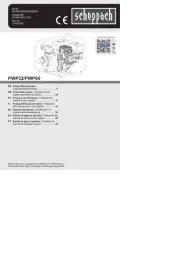
29 Juli 2025
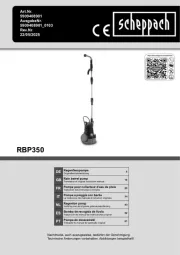
21 Juli 2025
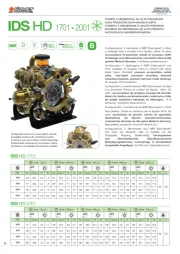
15 Juli 2025
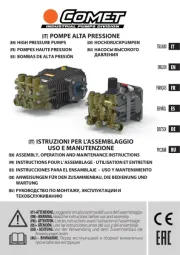
14 Juli 2025
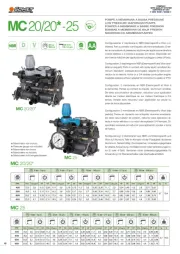
14 Juli 2025
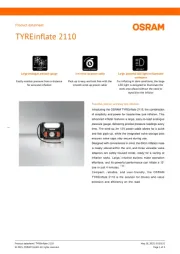
7 Juli 2025
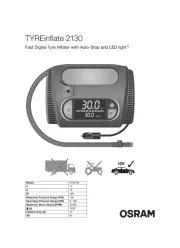
7 Juli 2025
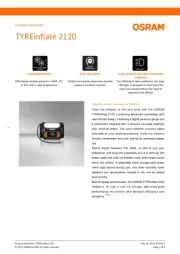
7 Juli 2025
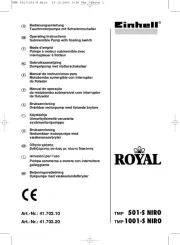
5 Juli 2025
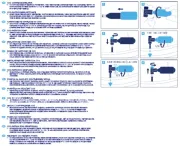
3 Juli 2025